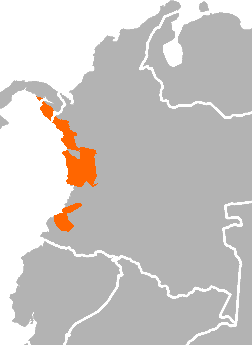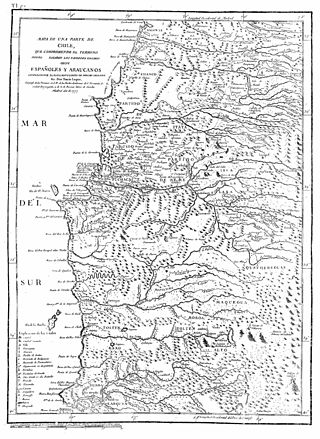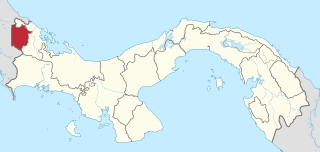Related Research Articles

This is a demography of the population of Panama including population density, ethnicity, education level, health of the populace, economic status, religious affiliations, and other aspects of the population. Panama's 2020 census has been postponed due to the COVID-19 pandemic but the government are currently assessing additional implications. They are evaluating the preparatory processes that can begin now, such as procurement.

SIL Global is an evangelical Christian nonprofit organization whose main purpose is to study, develop and document languages, especially those that are lesser-known, in order to expand linguistic knowledge, promote literacy, translate the Christian Bible into local languages, and aid minority language development.

The Choco languages are a small family of Native American languages spread across Colombia and Panama.

The Nahuan or Aztecan languages are those languages of the Uto-Aztecan language family that have undergone a sound change, known as Whorf's law, that changed an original *t to before *a. Subsequently, some Nahuan languages have changed this to or back to, but it can still be seen that the language went through a stage. The best known Nahuan language is Nahuatl. Nahuatl is spoken by about 1.7 million Nahua peoples.

The Arauco War was a long-running conflict between colonial Spaniards and the Mapuche people, mostly fought in the Araucanía region of Chile. The conflict began at first as a reaction to the Spanish conquerors attempting to establish cities and force Mapuches into servitude. It subsequently evolved over time into phases comprising drawn-out sieges, slave-hunting expeditions, pillaging raids, punitive expeditions, and renewed Spanish attempts to secure lost territories. Abduction of women and war rape was common on both sides.

The Naso or Teribe people are an indigenous people of Panama and Costa Rica. They primarily live in northwest Panama in the Bocas del Toro Province and Naso Tjër Di Comarca as well as in southern Costa Rica in the Puntarenas Province. There are roughly 3,500 people who belong to the Naso tribe. It is one of the few Native American indigenous groups or tribes that continues to have a monarchy.
The Qʼeqchiʼ language, also spelled Kekchi, Kʼekchiʼ, or Kekchí, is one of the Mayan languages from the Quichean branch, spoken within Qʼeqchiʼ communities in Mexico, Guatemala and Belize.

Emberá is a dialect continuum spoken by 100,000 people in northwestern Colombia and southeastern Panama. It belongs to the Choco language family.
The Bokota, also called Bogotá or Bugleres, are an indigenous people of Panama. They live in Bocas del Toro and north of Veraguas. Bokota live in the same region as the Teribe or Naso Indians. As the 2010 Census, there were 26,871 Bogota living in Panama. They are the smallest tribe in Panama and live in the west of the country. Traditionally they spoke the Bokota language, a dialect of Buglere.

The Zapotec languages are a group of around 50 closely related indigenous Mesoamerican languages that constitute a main branch of the Oto-Manguean language family and are spoken by the Zapotec people from the southwestern-central highlands of Mexico. A 2020 census reports nearly half a million speakers, with the majority inhabiting the state of Oaxaca. Zapotec-speaking communities are also found in the neighboring states of Puebla, Veracruz, and Guerrero. Labor migration has also brought a number of native Zapotec speakers to the United States, particularly in California and New Jersey. Most Zapotec-speaking communities are highly bilingual in Spanish.

Tlapanec, or Meꞌphaa, is an indigenous Mexican language spoken by more than 98,000 Tlapanec people in the state of Guerrero. Like other Oto-Manguean languages, it is tonal and has complex inflectional morphology. The ethnic group themselves refer to their ethnic identity and language as Me̱ꞌpha̱a̱.

El Bierzo is a comarca in the province of León, Spain. Its capital is the town of Ponferrada. Other major towns are Bembibre and Villafranca del Bierzo, the historical capital.
Araona or Cavina is an indigenous language spoken by the South America Araona people; about 90% of the 90 Araona people are fluent. Use of the language amongst the tribe is considered vigorous although Spanish knowledge is increasing. The Araonans live in the headwaters of the Manupari river in northwest Bolivia. Their language has a dictionary and portions of the Bible have been translated into Araona.
Huasteca Nahuatl is a Nahuan language spoken by over a million people in the region of La Huasteca in Mexico, centered in the states of Hidalgo (Eastern) and San Luis Potosí (Western).

Carabaya Province is a province of the Puno Region located in the southern part of Peru. It is bounded on the north by the Madre de Dios Region, on the east by the Sandia Province, on the south by the provinces of Azángaro, Melgar and Putina and on the west by the Cusco Region. The capital of the province is the city of Macusani.
Mariscal Gamarra District is one of the fourteen districts of the Grau Province in Peru.
Teribe is a town and corregimiento in the Naso Tjër Di Comarca of Panama. It has a land area of 858.5 square kilometres (331.5 sq mi) and had a population of 2,578 as of 2010, giving it a population density of 3 inhabitants per square kilometre (7.8/sq mi). It was created by Law 5 of January 19, 1998. Its population as of 2000 was 1,808.
Saliba is an indigenous language of Eastern Colombia and Venezuela. Saliba was used by Jesuit missionaries in the 17th century to communicate with indigenous peoples of the Meta, Orinoco, and Vichada valleys. An 1856 watercolor by Manuel María Paz is an early depiction of the Saliva people in Casanare Province.

Indigenous peoples of Panama, or Native Panamanians, are the native peoples of Panama. According to the 2010 census, they make up 12.3% of the overall population of 3.4 million, or just over 418,000 people. The Ngäbe and Buglé comprise half of the indigenous peoples of Panama.

The Naso Tjër Di Comarca is a landlocked indigenous region of Panama, located in the extreme northwest of the country, on the banks of the Teribe River and adjacent to the border between Costa Rica and Panama. The region is inhabited mainly by the Naso ethnic group, which is made up of about 5000 people. It was created on December 4, 2020 and has an area of 1,606.16 square kilometres (620.14 sq mi), of which 1468.63 km2 are protected areas of the La Amistad International Park and the Palo Seco Forest Reserve.
References
- ↑ Teribe at Ethnologue (18th ed., 2015) (subscription required)
- ↑ Gamarra A. & Villagra S. 1980, p. 5.
- ↑ "Font Features for Doulos SIL" (PDF). SIL.org. 2014.